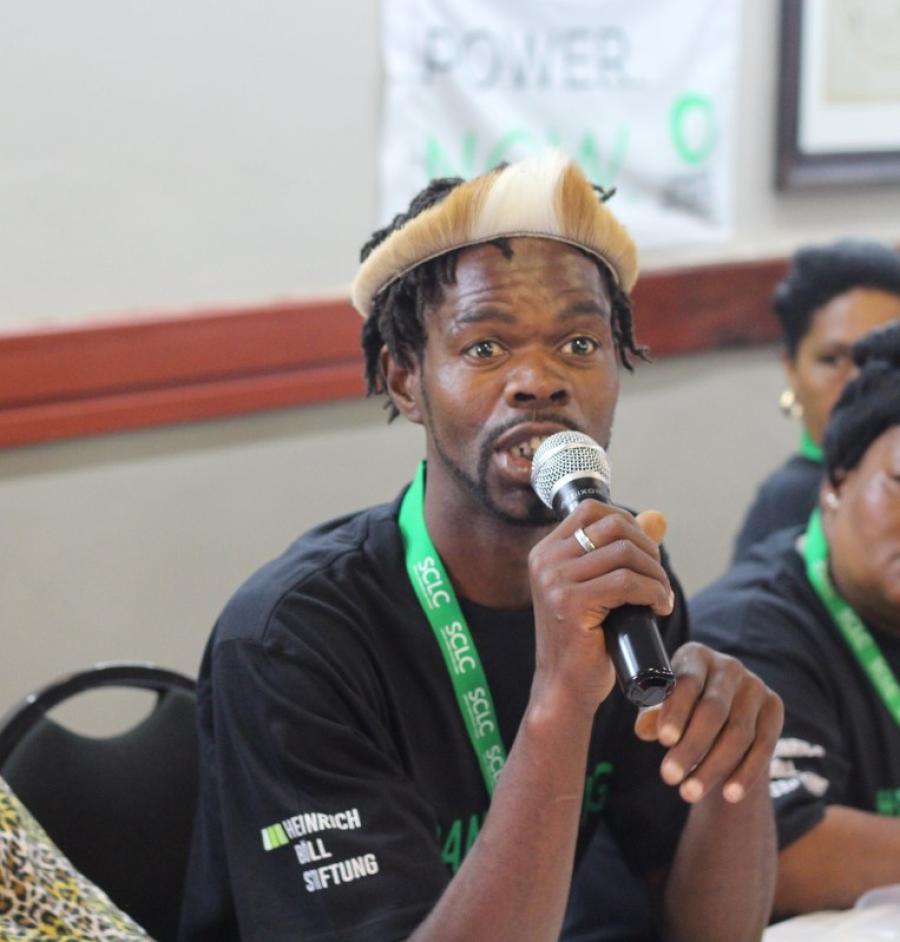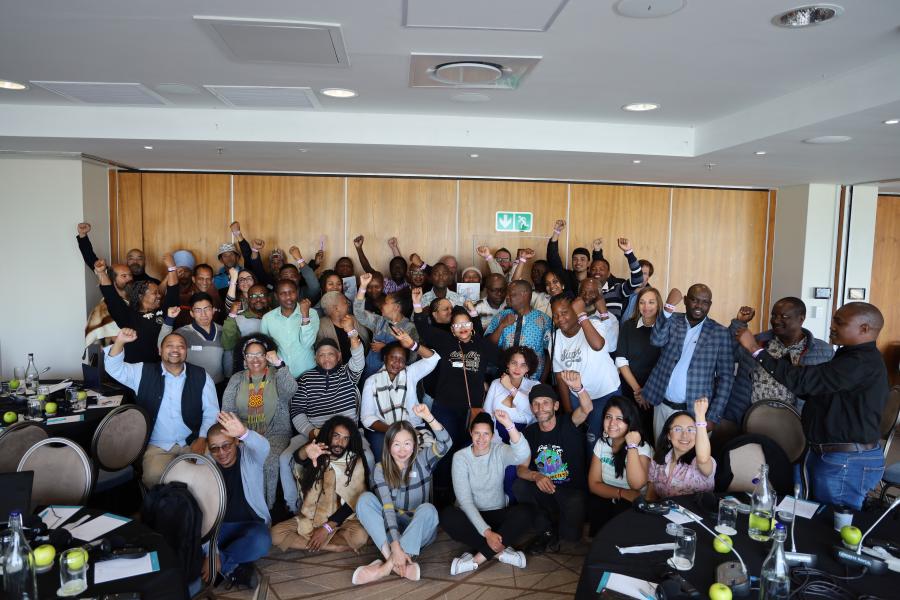Southern African states have been at the forefront of efforts to promote an integrated approach to conservation and sustainable development through decentralization of the rights to manage wildlife and other natural resources. In Botswana, for example, individual communities have been able to form community trusts and engage in natural resource management and utilization. Rarely, however, have local communities been given complete control over resources. The consequence is that the community trusts and other local-level institutions continue to be dependent on higher-order institutions such as central government agencies and district administrations. A more decentralized, equitable, and participatory approach to conservation and development is needed.
Despite some successes, southern African states still face a number of problems ranging from warfare and social insecurity to inequality in access to land and income and increased competition for resources. Nearly half of the region’s people, particularly those in rural and peri-urban areas, live in poverty.
To make CNBRM and local-level development possible, communities often need skills in management, administration, organization, and finance. Various agencies and non-governmental organizations (NGOs) such as the World Wildlife Fund-US, the Worldwide Fund for Nature (Switzerland), and the World Conservation Union have helped implement various kinds of CBNRM programs. Zimbabwe Trust, for example, has worked with Tyua (San) communities in western Matabeleland, while the Kalahari Conservation Society has helped four local communities in the Nata River region of northeastern Botswana establish a nature sanctuary that protects unique habitats for water birds like flamingos and pelicans.
Namibia has developed an innovative approach to CBNRM. In communal areas, conservancies have been established in which local communities have the right to utilize their resources and to limit outsiders’ access to them. They also have the right to enter into business arrangements with private companies or individuals and to control and derive benefits from tourism and other resource use activities.
The Nyae Nyae Conservancy (NNC), established in January 1998, is the oldest of the Namibian communal conservancies. The NNC, some 9,003 square kilometers in size, was able to generate N$260,000 ($37,000 US) in revenue--partly distributed as dividends to the members of the Conservancy, who are all Ju|’hoansi. And 730 new game animals--including hartebeest, gemsbok, springbok, and eland--were translocated to the Nyae Nyae area and released, expanding the biodiversity in the area, a strategy that promises to increase the region’s tourism potential.
In Namibia, more than 30 community-based tourism programs have been established in various parts of the country. These programs range from campsites run by communities--such as the !Xun-run Omatako Valley Rest Camp in Tsumkwe District West (see page 41)--to culturally significant sites with guides to show tourists around and provide them with information on the importance of what they are seeing--such as Twyfelfontein, a world-heritage petroglyph site. Empowerment will require open channels of communication and devolution of decision-making power to the grassroots level. Sometimes the most marginalized sectors do not benefit.
One of the persistent problems in CBNRM is that benefits such as jobs tend to go to a small percentage of community members, mainly adult males. One solution to the problem is to focus on natural resources used by women: craft items like ostrich eggshell beads, palms for basketry, and thatching grasses. CBNRM should focus not just on wild animals but also on wild plants, some of which have considerable commercial and spiritual value. Efforts must also be made to promote equity in job-creation and training of local people.
An effective example of empowerment strategies is the Trust for Okavango Cultural and Development Initiatives (TOCADI) in the Dobe area of western Ngamiland. With financial support from the Kalahari Peoples Fund, TOCADI was able to drill several boreholes in traditional Ju|’hoan n!oresi (territories) in the region around Dobe, a Community-Controlled Hunting Area known as NG 3 (5,760 square kilometers in extent). Several groups that have n!oresi in the Dobe area have come together to establish a representative and legal entity (a trust) so that they can gain rights over the Dobe area and utilize the resources there for their own purposes and for commercial tourism operations.
The |Xai|Xai (CgaeCgae) Tlhabololo Trust (CTT) is a community-based organization south of Dobe. Its goals are:
1. To enhance the well-being of the people of |Xai|Xai, a village of some 350 people on the Botswana-Namibia border.
2. To diversify the local economy by expanding craft production and marketing, tourism, small-scale business (vending), and food production.
3. To promote biodiversity conservation in the |Xai|Xai area.
The CTT also concentrates on preserving cultural traditions and raising awareness among the general public about the unique lifeways of the Ju|’hoansi and Mbanderu.
The CTT is a representative and accountable management body with a Board of Directors, a constitution, and a set of officers. All adult members of the community are members, with Board elections held every five years. In 1997, the Trust was allocated the wildlife quota for Community-Controlled Hunting Areas NG 4 and NG 5 by the Department of Wildlife and National Parks, an area 16,966 square kilometers in size. Over 250,000 Pula ($35,000 US) was generated in |Xai|Xai in the late 1990s, but the latest contract could yield four times that amount—one million Pula—from a safari operator bringing hunters and tourists into the area. Members of the |Xai|Xai community would receive food, blankets, medicines, and employment as part of the benefits from the safari operator.
But problems with these programs remain. So far the community members receive little more than cash in Trust bank accounts and, in some cases, jobs. Relatively little skills transfer has occurred, and community members do not have much, if any, control over decision-making. And a lack of trust has come between stakeholders. Community members sometimes feel that safari operators are taking advantage of them, and the operators sometimes feel that they are being “held for ransom” or “blackmailed” by communities holding leasehold rights over hunting areas.
Rather than let these issues work themselves out, the government of Botswana has taken a step backward in CBNRM policy. In January 2001, the Ministry of Local Government announced its intention to essentially strip community trusts of their right to manage their own CBNRM revenues. The government’s position was that natural resources, like minerals, should be for the nation as a whole and not just for individual communities. The government also argued that only a few people benefit from CBNRM-generated funds, and alleged mishandling of funds in a few instances. Finally, ignoring the rationale for setting up CBNRM projects in the first place, the government said that jobs generated in CBNRM projects were being reserved for people in the trusts and were not available to outsiders.
It is as yet unclear whether the decision by the Botswana government will be implemented. If it is, much of the progress made in CBNRM and local level conservation and development will be negatively affected, and communities will lose many of their previously attained gains.
Sufficient time and resources must be provided for communities to develop the necessary skills and institutional capacity to make CBNRM work. Success will also depend on the kinds of approaches employed; the more participatory the approach, the better. In joint venture agreements with private sector partners, both parties--the private operators and the community trusts--should share in both responsibilities and risks.
Community-based projects run entirely by community members, who all get direct benefits, would be ideal. The lessons from CBNRM projects in southern Africa make it clear that more decentralization and community control are needed, not less. Unless these steps are taken, communities in southern Africa will continue to be dependent on higher-order institutions including district councils and government ministries, and community self-sufficiency will not be achieved.
This article is adapted from a paper presented at the Annual Meetings of the American Anthropological Association in Washington D.C. in November 2001.



